London LTNs: Pollution and traffic down in surrounding areas, research shows
- Published
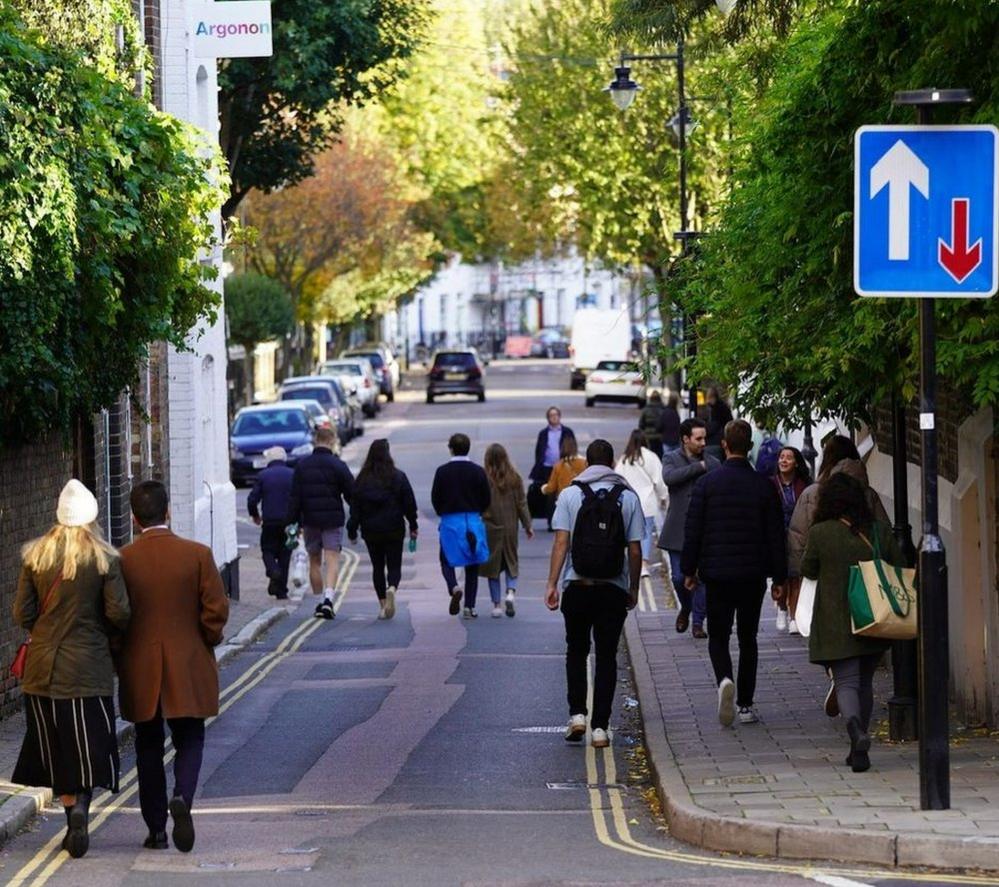
The St Peter's low-traffic neighbourhood in Islington was monitored by Imperial College
Low-traffic neighbourhoods (LTNs) in London reduce traffic without displacing it to nearby streets, researchers have found.
Imperial College London studied three LTNs in Islington to identify their effect on surrounding areas.
Researchers found a fall in traffic and also in nitrogen dioxide emissions in the LTNs and in the boundary roads.
But some campaigners remain opposed to the schemes, maintaining they cause, rather than reduce, congestion.
The study found that concentrations of nitrogen dioxide fell by 5.7% within the LTNs and by just under 9% on their boundaries, compared to the control sites.
It also found that traffic dropped by over half inside the LTNs and by 13% at the boundaries.
The research, conducted independently using data from Islington Council, used a small data set and requires further research to have significance at a larger scale, researchers said.
LTNs aim to reduce through-traffic in residential areas, usually by the use of barriers which prevent cars from using certain streets, while leaving the road open to pedestrians and cyclists.
Many LTNs were put in place during 2020, to prevent an increase in traffic as people avoided public transport during the pandemic. Now, they serve primarily to reduce pollution and keep the streets safe for children.
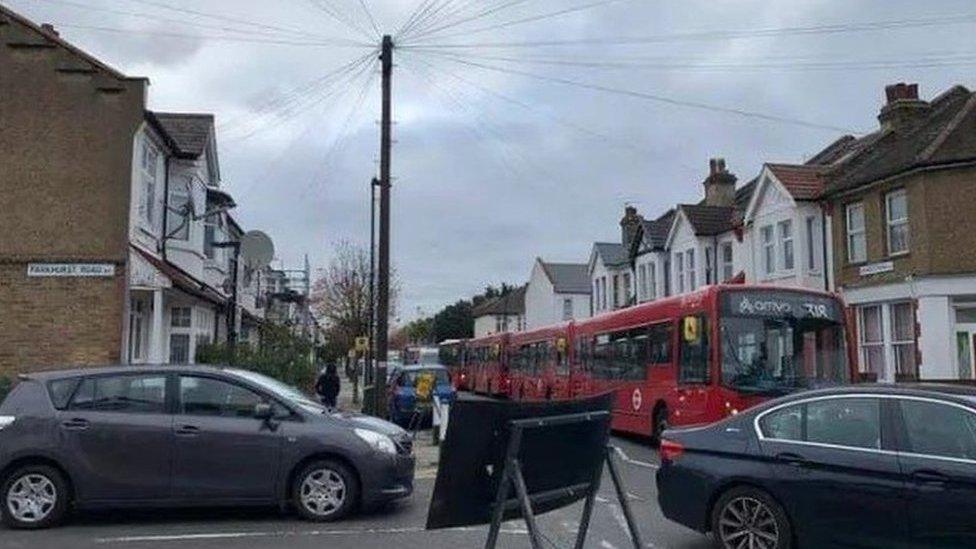
One resident photographed "four buses stuck in a row" in Tottenham, referencing the congestion caused on boundary roads
LTNs have been strongly opposed by some since their introduction. They have led to other problems, it is claimed, by pushing congestion on to nearby main roads.
Alex Xara, a retailer in Tottenham in Haringey - a borough where LTNs are some of the most hotly disputed - told the BBC that his business had suffered greatly due to a reduction in footfall because the zone had made it too difficult for drivers to access his business. Customers in cars now have to take lengthy detours, he said.
'Sacrificed roads'
He also said that delivering products by bicycle had become more difficult, as he believes pollution levels are higher nearby due to the low-traffic zone.
"Cycling down the 'sacrificed roads' bombards me with car exhausts and for longer periods of time for the benefit on those living near the LTN.
"I send my other employees by train now, doubling my travel expenses."
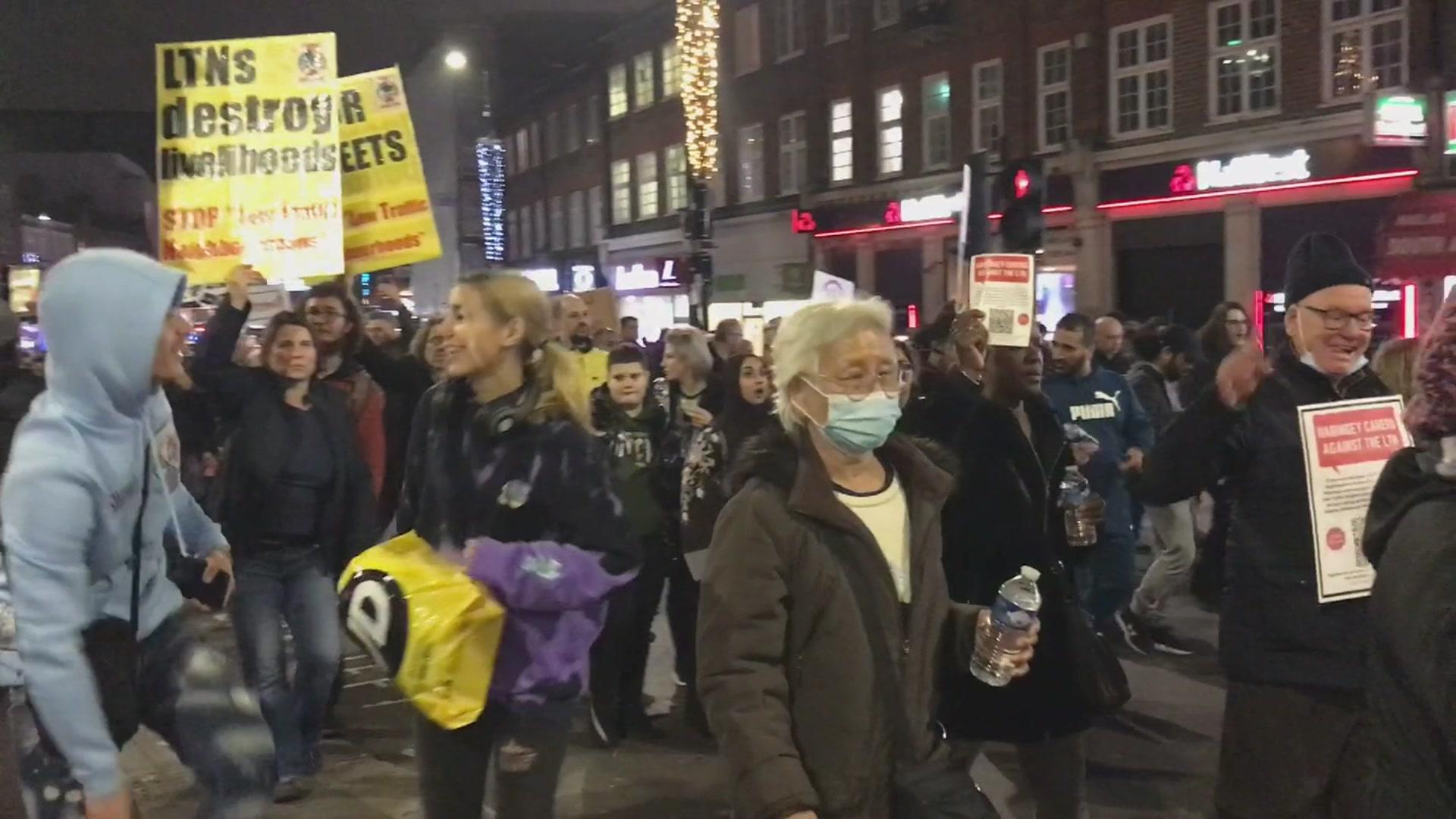
Anti-LTN protesters took to the streets of Tottenham earlier in November
Many groups have organised in protest of the LTNs, campaigning on social media and even taking to the streets.
A large protest took place on 14 November in Tottenham against the West Green and Bruce Grove LTNs.
Among the demonstrators was a group of Haringey carers who say the installation of LTNs has affected their ability to do their jobs.
A spokesperson for Haringey Carers Against the LTN said the traffic delays they were experiencing were "creating massive time-management problems".
"When you care for someone who needs certain care at specific times of the day, delays to providing that care can be very detrimental to all parties," the spokesperson said.
There have also been claims that ambulances and fire engines have been delayed by planters - a feature of the schemes - blocking routes.
London councils including Wandsworth and Ealing have removed LTNs in recent years, some soon after they were installed.
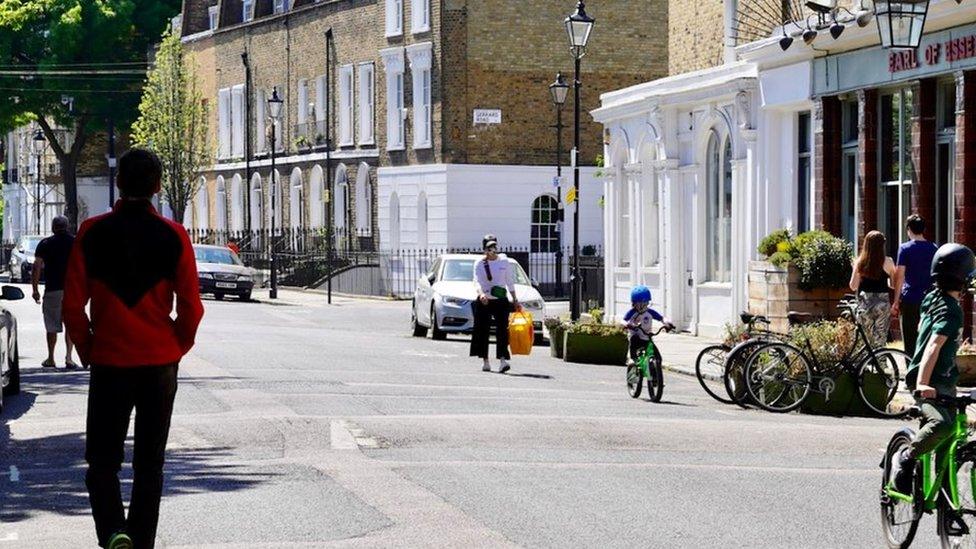
The St Peter's LTN in Islington
The team at Imperial compared pollution and traffic levels at monitoring stations inside the zones, on streets surrounding the zones, and at control sites further away, using data gathered by Islington Borough Council.
The LTNs, in St Peter's, Canonbury and Clerkenwell, were put in place between July and September 2020.
The researchers said they carried out a complex statistical analysis to ensure other factors that might affect traffic volumes and air pollution at particular times, such as the Covid restrictions in place, school holidays or weather, could be taken into account.
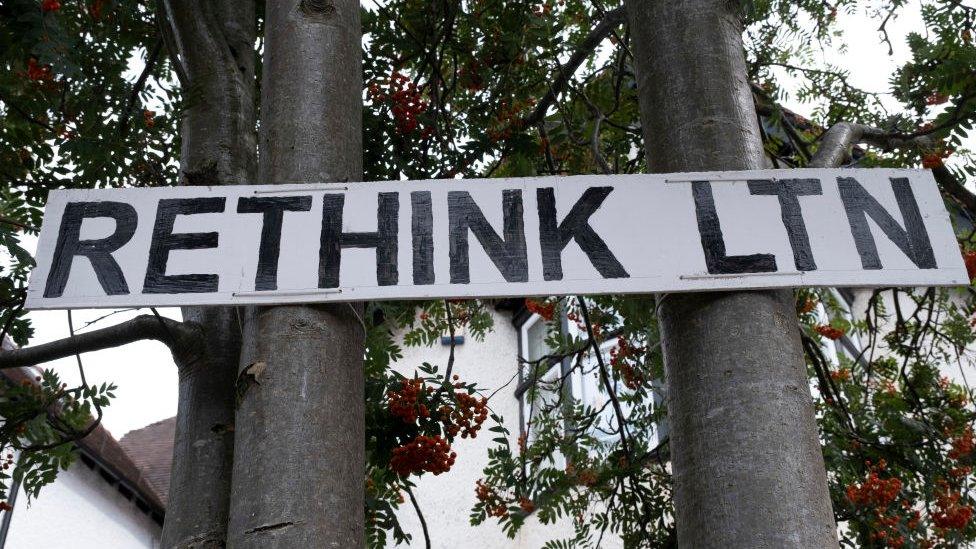
Several councils have changed their approach to LTNs
Dr Audrey de Nazelle, from Imperial College London's Centre for Environmental Policy, said: "This research effectively disproves the argument that low-traffic zones will necessarily cause an increase in traffic and air pollution in neighbouring streets.
"In the three areas we looked at, they reduced both traffic volumes and, significantly, air pollution both inside and on the edges of the zone.
"Alongside the other benefits of LTNs that have been shown in previous research - such as improvements in safety and an increase in walking and cycling - this makes a very strong argument in their favour."
Co-author, Imperial College London PhD student Helen Yang, added: "This is the first study to use a robust statistical approach to show the impact of LTNs on surrounding areas, and the results are really encouraging. We worked with a relatively small data set and further research is now needed to confirm these findings at a larger scale."
A spokesperson for Low Traffic Hackney said: "Many LTNs, including in Hackney, have been installed for decades and there are no calls to scrap these. The recent LTNs are becoming just as accepted, and we look forward to London councils installing more LTNs in the near future."

Follow BBC London on Facebook, external, Twitter , externaland Instagram, external. Send your story ideas to hellobbclondon@bbc.co.uk, external
- Published11 July 2022

- Published26 April 2022
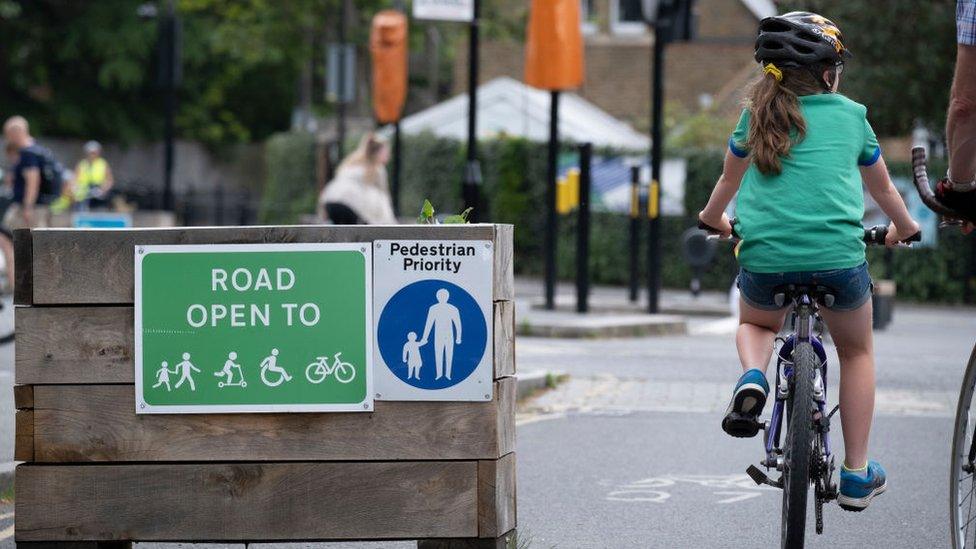
- Published17 September 2020